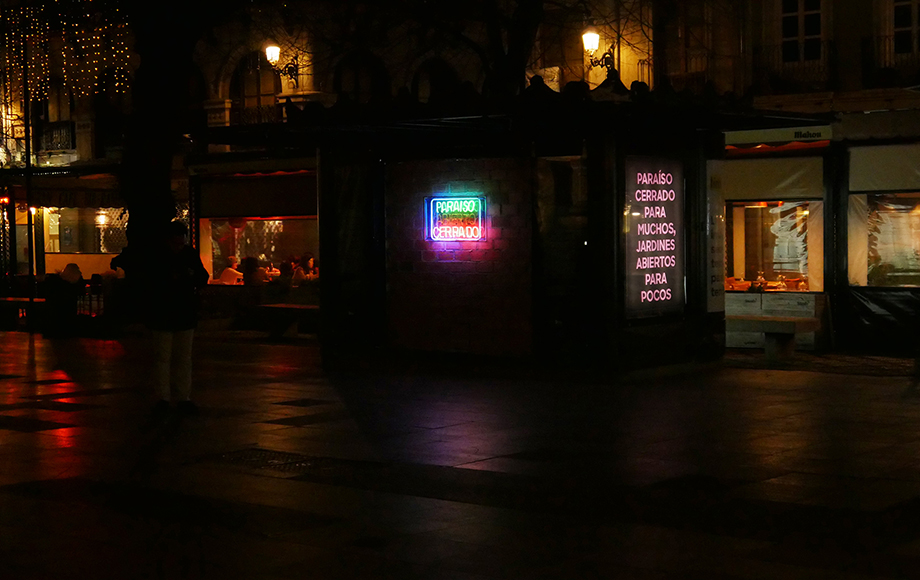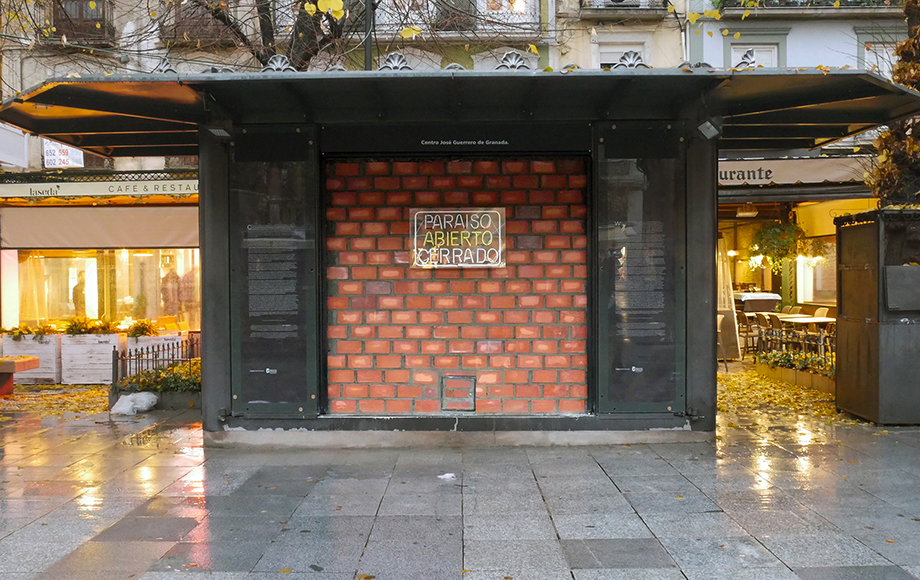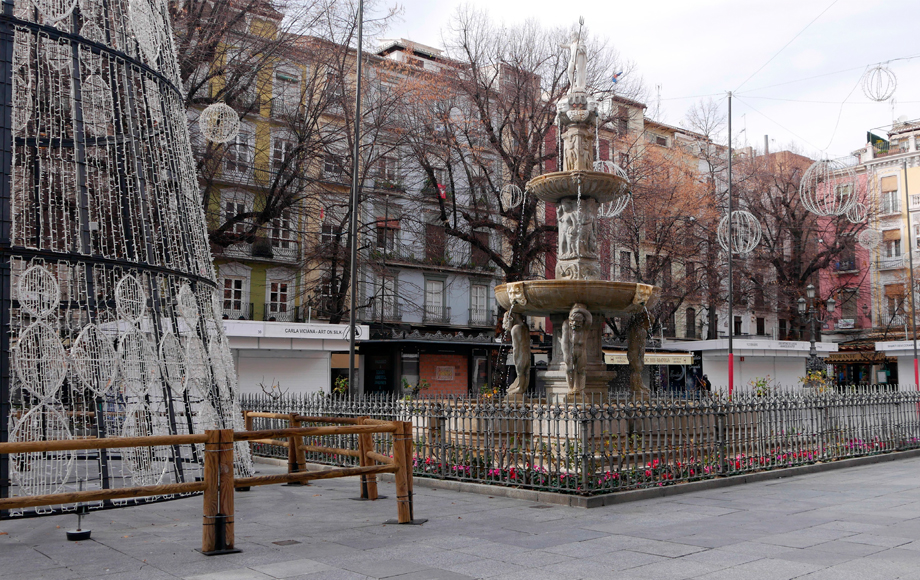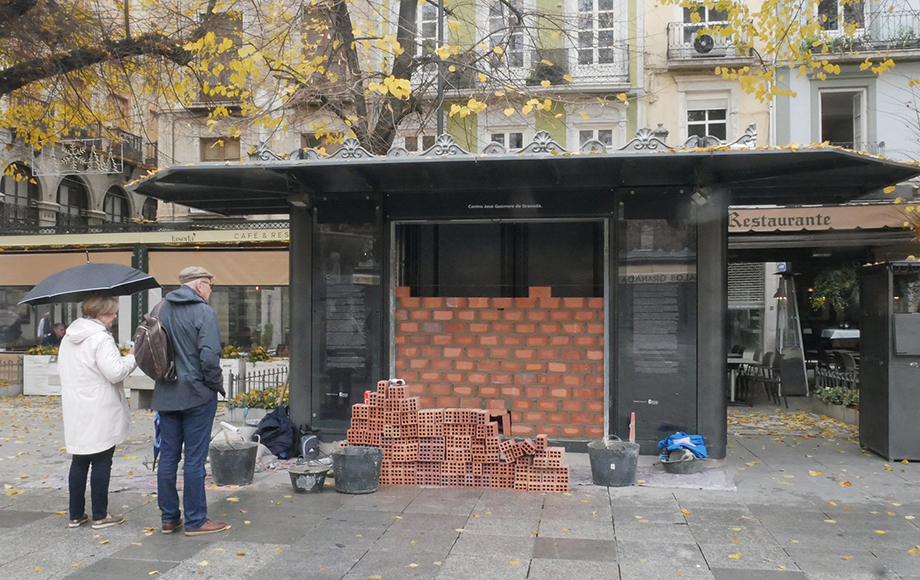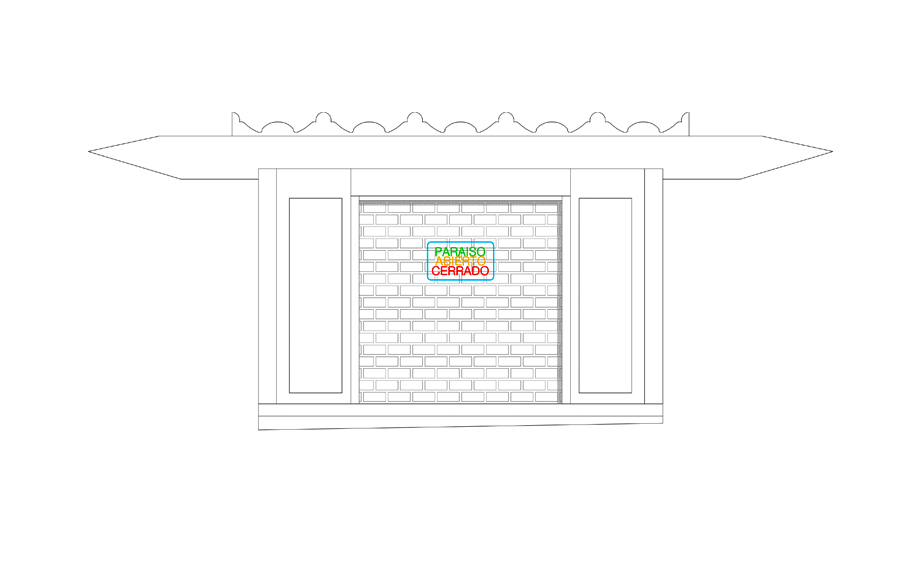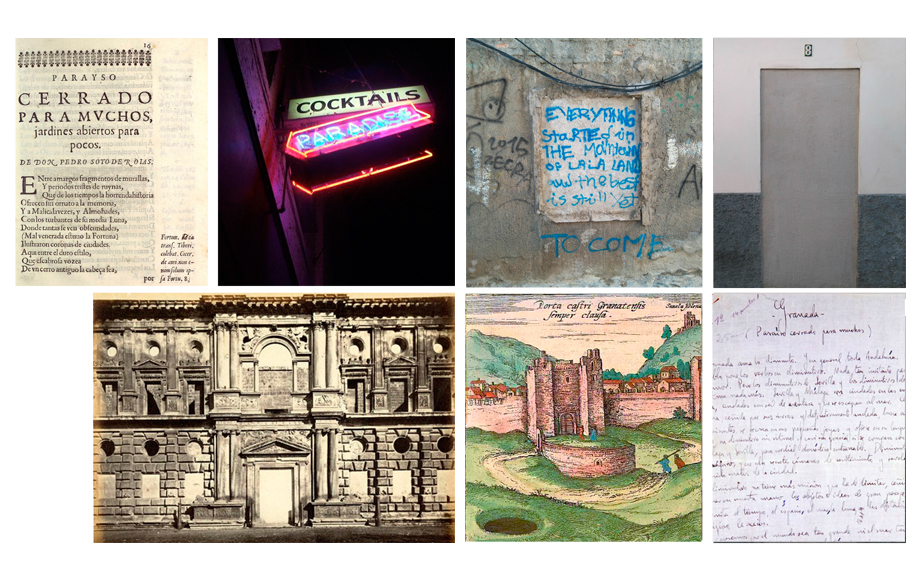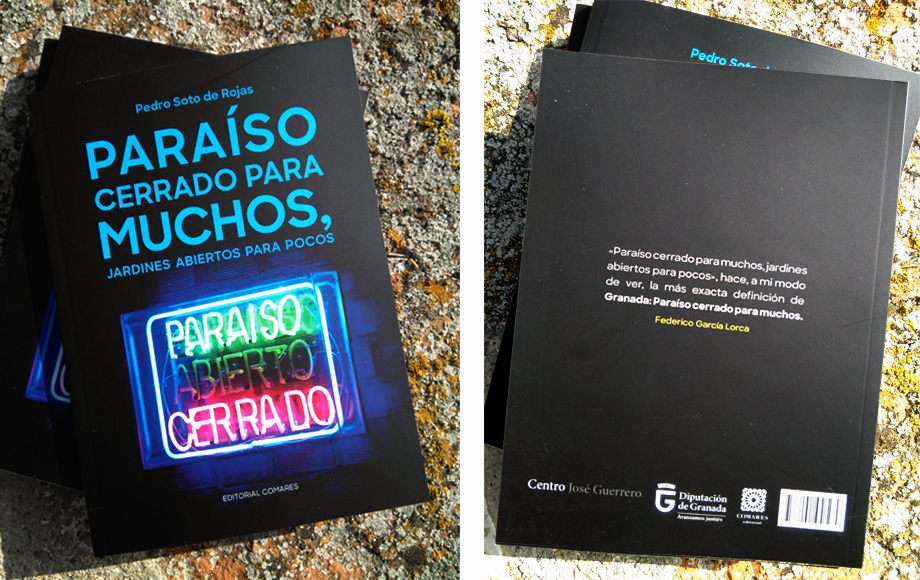Paraíso Abierto/Cerrado
Granada, 2017-2018
The paradox of the limit.
This transient architecture is a built reflection addressing the concept of limit. It is based on the poem from 1642 by Pedro Soto de Rojas Paradise closed to many, gardens open to a few, and the paradox behind its publication: he revealed the intimacy of his garden without having to open the doors to his carmen in the Albayzín.
Nowadays, in a context of individual overexposure and city hyper-consumption, we consider the validity, pertinence, crisis, reformulation or reaffirmation of the limit, precisely in the sphere of public space.
The limit—an invariant theme for architecture, is a membrane that mediates between interior-exterior dualities. It produces pause. The question is the quality acquired by the limit between the realms of the public and the private, between the individual and the collective, between what is literal and what is imagined, between what is consumable and what is unattainable, and how it is conformed in order to foster both shared and personal subjectivities. Sealing the kiosk with an unfinished vulgar brick wall that is alien to its own material and building logic and hanging a partially lit and commercially inspired neon sign on it is a way of stirring up this debate. Thus, the slogan Paradise Open/Closed, becomes the opening statement of a possible manifesto.
The intervention went beyond its physical and temporary presence: a book was reissued with the poem, including an essay about these matters, and a series of activities were organized, such as a collective reading of the poem held on the square in front of the kiosk. Online, the free reactions, interactions and interpretations of many passersby were captured.



